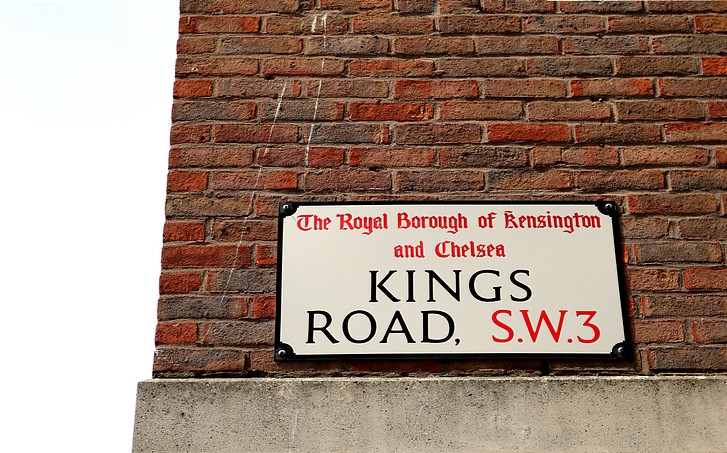
The two mile long King’s Road, which wends its way through London’s Chelsea and Fulham districts, is one of the capital’s most famous streets, and in the last 70 years has been known for its fashionable shops and residents.
But was it ever a road belonging to a king as its name suggests? Actually, it was.
Built in the 17th Century by King Charles II to link St James’s Palace to Fulham and then on to Kew and Hampton Court, the King’s Road remained a private road until about 1830, and only used by members of the aristocracy and royal house.
The road itself starts at Sloane Square and ends at the junction with Waterford Road before turning into the, aptly named, New King’s Road. In 1855 in ‘celebration’ of a new cemetery in the borough it was renamed Cemetery Road. But, thankfully, in 1911, the name was changed back to the King’s Road in honour of the coronation of George V.
The rise of youth culture
By the 1950s, the first shops had opened on the King’s Road selling ‘youth fashion’. But it was the 1960s that really saw the area ramp up its reputation for youth culture and fashion. Designer Mary Quant was responsible for bringing the mini skirt to the masses with her iconic boutique, Bazaar. While the famous Chelsea Drugstore, with its American-style neon interior and soda fountains, (now a McDonald’s) was the epicentre for fashion hipsters and musicians. The King's Road was frequented by the likes of Jimi Hendrix and the Beatles, and in 1966 The Who played even played a gig at Duke of York army barracks (now a shopping area and art gallery).
Punk and World’s End
The popularity of the King’s Road continued unabated in the 1970s. Designer and Godfather of punk, Malcom McClaren, opened his boutique Let it Rock in 1971 with designer Vivienne Westwood, before renaming it SEX in 1974 and then renaming it again in 1977 to the less controversial Seditionaries. Their boutique became a Mecca for Punk rockers and ensured the King’s Road was awash with tartan-clad kids. Doyenne of the fashion world, Dame Vivienne Westwood still has a tiny store at World’s End on the King’s Road selling innovative and creative clothes.
Of course, Punk wasn’t the only music being played. Members of The Rolling Stones were often seen out and about. And Led Zeppelin even started a record label, Swann Song Records in 1974 at number 484 King’s Road.
Sloane Rangers
By the 1980s, tartan trousers and safety pins had made way for Barbour jackets and pearls as the Sloane Rangers took over. These young urban professionals, or Yuppies, as they were known, had money to spend, thanks to working in the booming finance sector and, for many, having a helping hand from wealthy parents. Designer boutiques and high end restaurants moved in and house prices started to climb. And they haven’t stopped.
The King’s Road today
Today, the King’s Road is an upmarket shopping and eating destination like no other but still has managed to retain some of its charm and eccentricities from previous decades. Whether you live in the area or are just paying a visit, a stroll down the King’s Road on a sunny afternoon is always rewarding.


